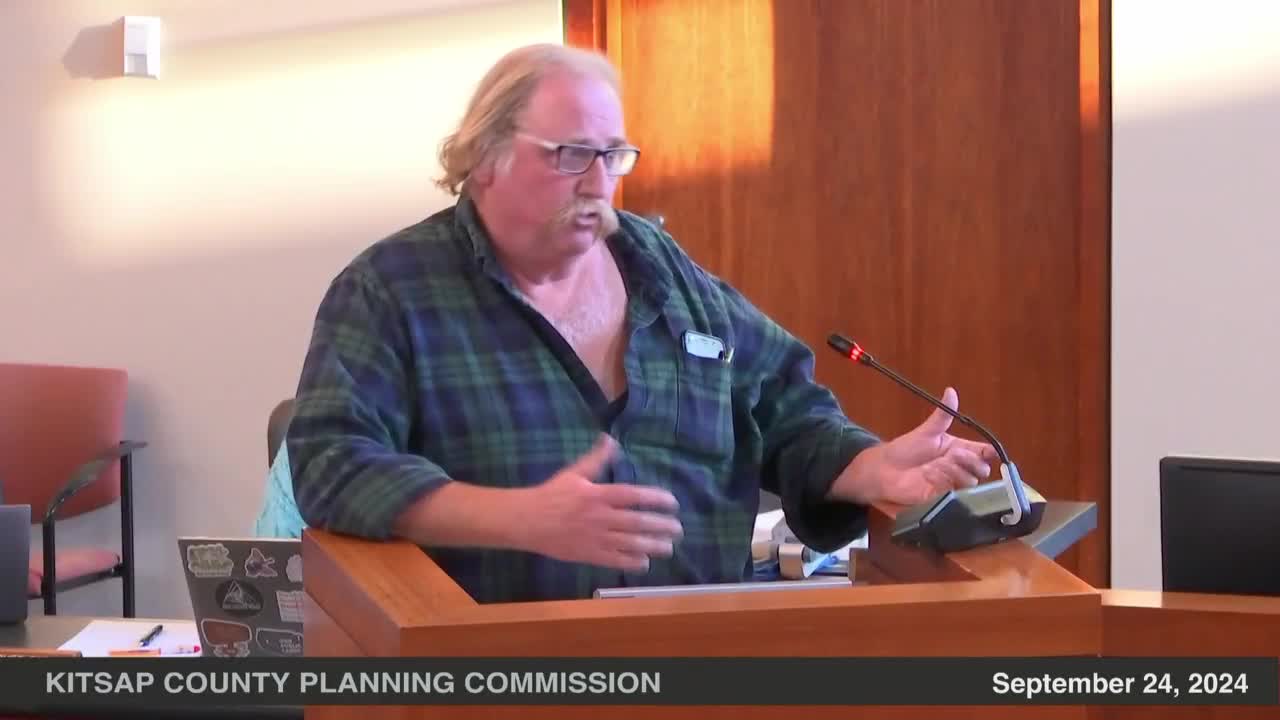County faces backlash over new housing regulations and affordability crisis
September 24, 2024 | Kitsap County, Washington
This article was created by AI summarizing key points discussed. AI makes mistakes, so for full details and context, please refer to the video of the full meeting. Please report any errors so we can fix them. Report an error »

During a recent government meeting, significant discussions emerged regarding housing regulations and development challenges in the region. One participant raised concerns about the current subdivision requirements for multi-family housing, particularly the 16-foot minimum on zero lot lines, arguing that it is impractical given their experience living in smaller spaces. They suggested that reducing the size of townhouses could better accommodate urban living.
The conversation also highlighted issues stemming from the Growth Management Act, specifically the county's failure to extend sewer services to designated urban growth areas. This lack of infrastructure has left property owners unable to subdivide their 9,000 square foot lots, effectively stalling development opportunities. A proposal was made to allow single-family homes to be built on these lots if sewer access is not available within 200 feet.
Further discussions included the removal of indoor storage from regional commercial zones, which some believe contradicts the push for increased density in these areas. Changes to the definition of a building site were also debated, with calls to revert to the previous definition that allowed for aggregation of lots, thereby accommodating existing property configurations.
Parking regulations were another focal point, with suggestions to reduce maximum access widths and stall sizes to create more space for street trees and enhance urban greenery.
Ian Harkins, representing the Kitsap Building Association, emphasized the pressing issue of housing affordability, noting that the county's introduction of new regulations—including tree canopy and development regulations—could exacerbate the existing affordability crisis. He argued that instead of imposing additional regulations, the county should focus on reducing bureaucratic hurdles to facilitate more accessible housing development.
The meeting underscored the complex interplay between regulatory measures and housing availability, with participants advocating for a more balanced approach to urban development that prioritizes both infrastructure and affordability.
The conversation also highlighted issues stemming from the Growth Management Act, specifically the county's failure to extend sewer services to designated urban growth areas. This lack of infrastructure has left property owners unable to subdivide their 9,000 square foot lots, effectively stalling development opportunities. A proposal was made to allow single-family homes to be built on these lots if sewer access is not available within 200 feet.
Further discussions included the removal of indoor storage from regional commercial zones, which some believe contradicts the push for increased density in these areas. Changes to the definition of a building site were also debated, with calls to revert to the previous definition that allowed for aggregation of lots, thereby accommodating existing property configurations.
Parking regulations were another focal point, with suggestions to reduce maximum access widths and stall sizes to create more space for street trees and enhance urban greenery.
Ian Harkins, representing the Kitsap Building Association, emphasized the pressing issue of housing affordability, noting that the county's introduction of new regulations—including tree canopy and development regulations—could exacerbate the existing affordability crisis. He argued that instead of imposing additional regulations, the county should focus on reducing bureaucratic hurdles to facilitate more accessible housing development.
The meeting underscored the complex interplay between regulatory measures and housing availability, with participants advocating for a more balanced approach to urban development that prioritizes both infrastructure and affordability.
View full meeting
This article is based on a recent meeting—watch the full video and explore the complete transcript for deeper insights into the discussion.
View full meeting
